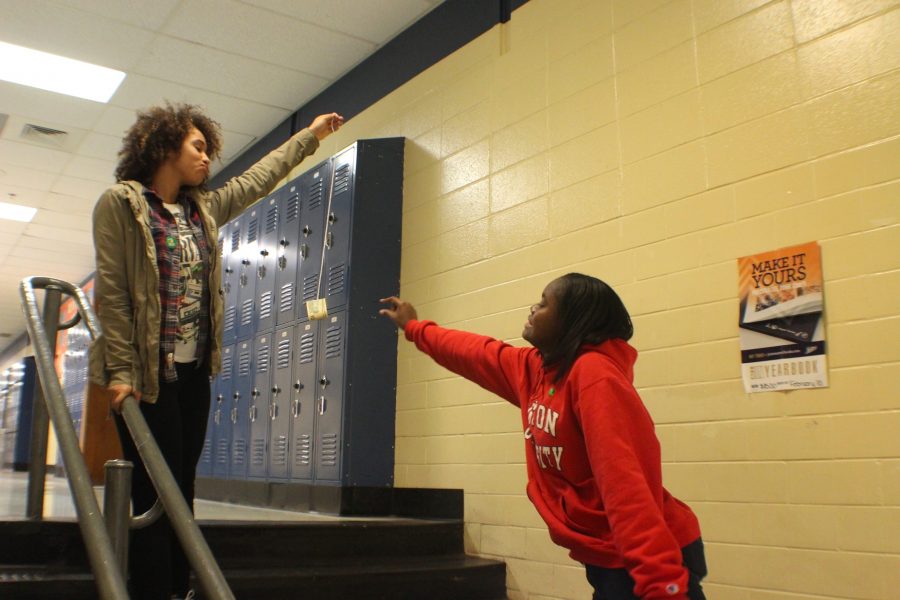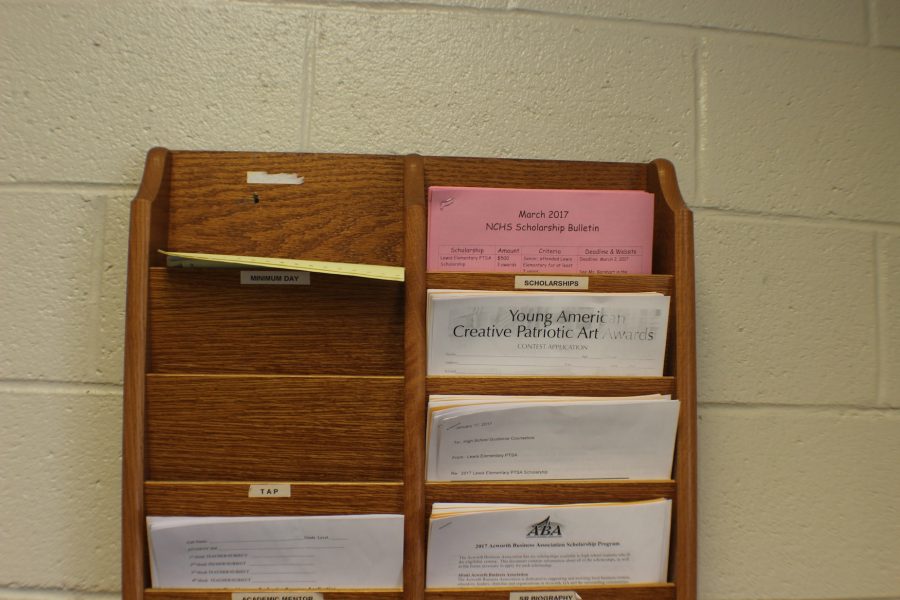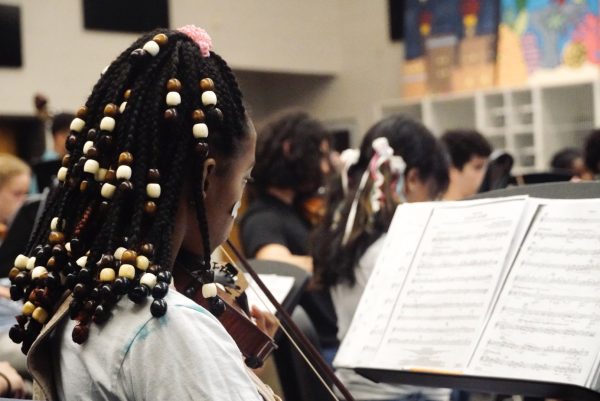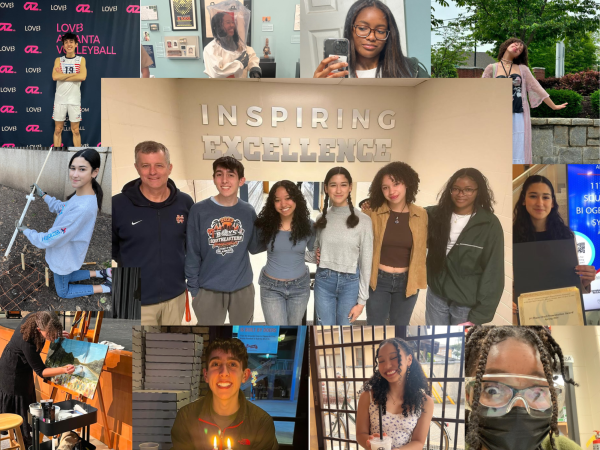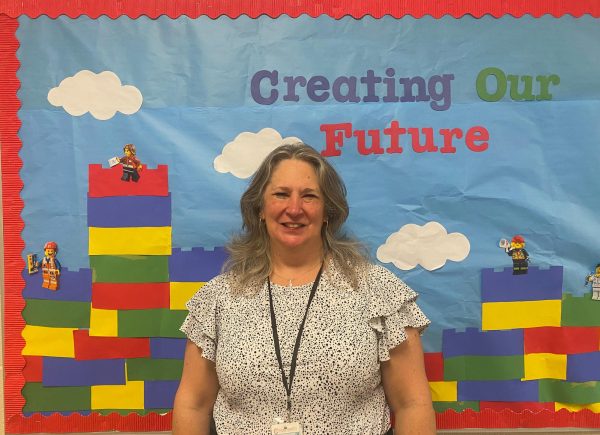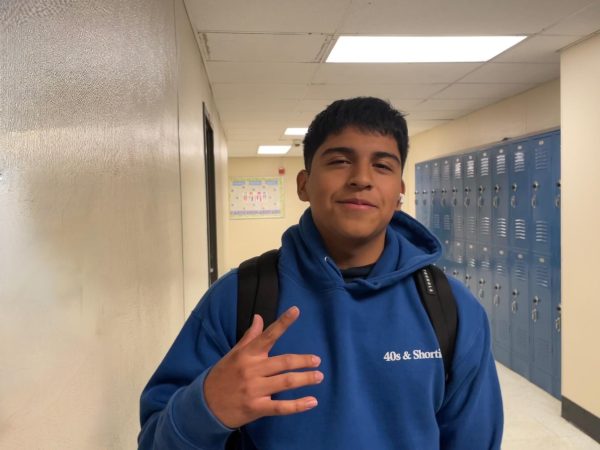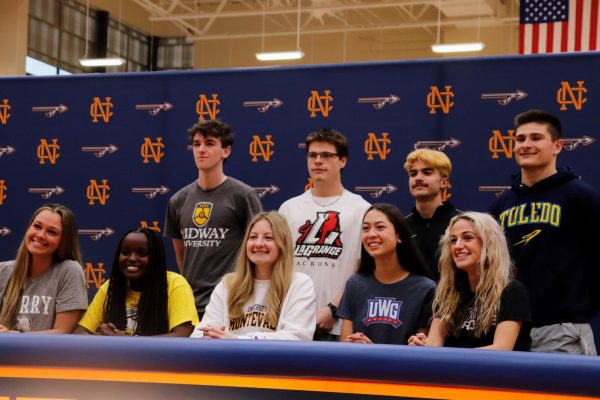Money matters: How to not go broke in college
Senior Celina Cotton holds out a dollar while Kesha Perkins reaches out. Students in the class of 2017 struggle to find ways to pay for their college education, often times seeking scholarships or financial aid. “I don’t want my parents to pay all of my undergraduate education because I know they’ve housed and fed me for the past eighteen years,” Perkins said.
March 20, 2017
As seniors settle down with their college decisions, their journey remains unresolved with one question: how will they afford the expenses of universities including tuition, housing, textbooks, and other fees?
In the United States, approximately 68% of students enroll in college directly after graduating from high school. Furthermore, 44.2 million people owe $1.31 trillion dollars in student loans as of 2016. 85% of people attending universities full-time seek financial aid, but millions of students leave postsecondary school in debt to either the federal government or private lenders.
Nearly 13 million college students use the Free Application for Federal Student Aid (FAFSA), under the jurisdiction of the US Department of Education, that provides $150 billion annually in student loans, grants, and work-study programs. Grants include any financial support that a student does not need to pay back, while loans require future repayment. For FAFSA, work-study urges students to take up jobs in community services that pertain to their major so they can gain experience and pay for schooling.
However, alternative scholarship options exist outside the federal government.
Recently, Nurse.org reached out to The Chant and extended the opportunity to learn more about their scholarship. Students ages 17 and above with a 3.0 GPA that plan to attend an accredited college or university may apply to the ongoing Nurse.org Healthcare Leaders Scholarship for the 2018 cycle. This exemplifies the endless number of specialized financial aid opportunities available to students.
“I first go to the packet in the counseling office; they do the monthly scholarships. I go through those, and on the last page in the packet, there’s a whole bunch of other websites for scholarship, and I go on that,” senior Kesha Perkins said. “First, I see what scholarships I’m eligible for because I’m not going to waste my time if I’m not going to be able to get it. Then, I look at the requirements, and if it needs an essay, I write the essay. However, I typically only choose the ones with the generic essay that I’ve already written because it’s less work for me.”
Students around the country find ways to bring down the cost of college and make it affordable for them and their families. In addition to students seeking grants, they also depend on teachers and counselors for recommendations.
“Make sure you ask a teacher that you know you had a good presence in class and worked hard so that they have enough information to write positively about you. They can help make you look strong student and a really strong representation of the scholarship you are applying for. Counselors find scholarship opportunities more often than teachers and that’s something they help with,” AP US History teacher Tamara Rankenburg said.
Students need to choose a teacher they enjoy and make sure that same teacher reciprocates the feeling. Furthermore, make sure to pick up the monthly scholarship sheet in the counseling office to find the best opportunities to make college expenses affordable.




